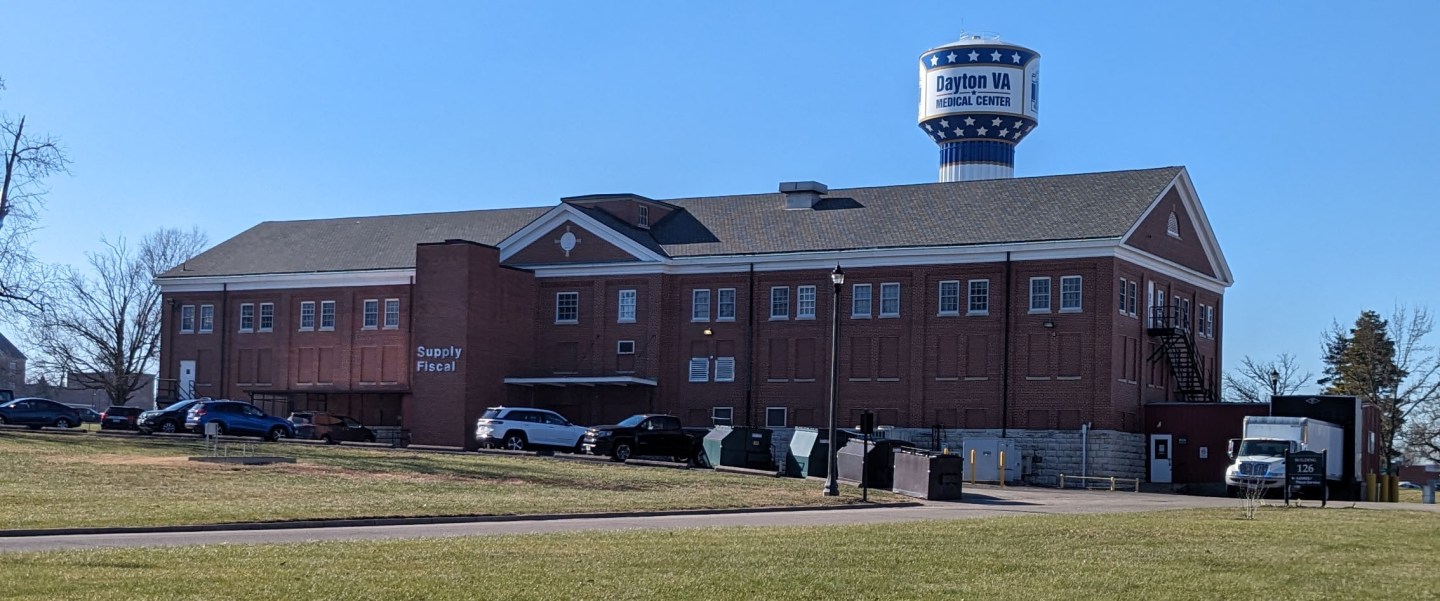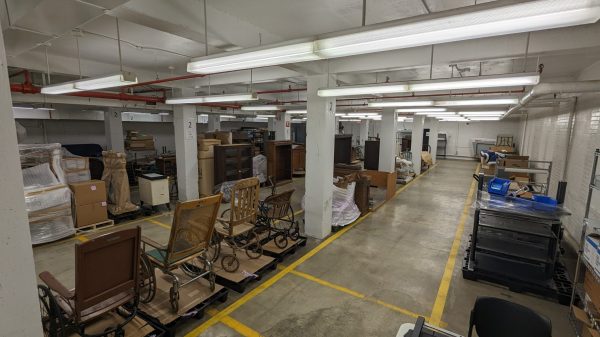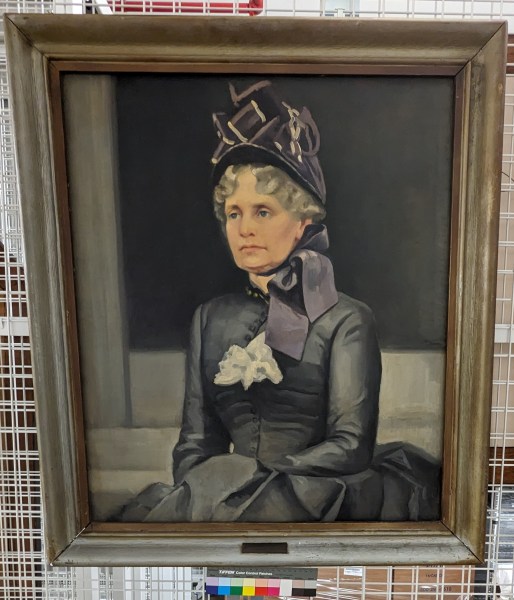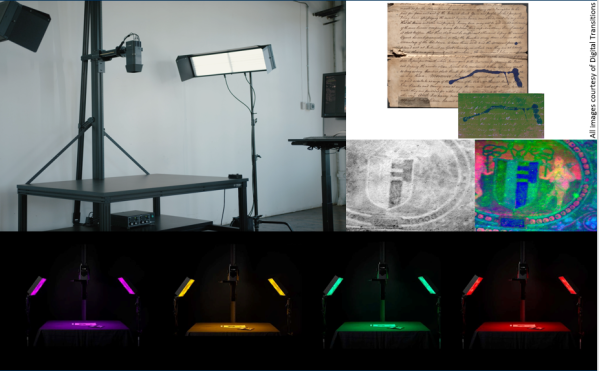The National VA History Center has a permanent home
In May, the National VA History Center moved from its temporary home in Building 401 to our long-term home for collections in Building 126. Moving on the Dayton campus required logistics and planning. We were moving artifacts and historical records, so we couldn’t use a company like Two Guys and a Truck. The pre-move planning was intense and stressful, but now the collections are in a better home.
The most exciting part of the move is that we now have a loading dock and freight elevator. That may not seem significant, but imagine trying to get a half-ton printing press upstairs and through a narrow door. Imagine the Friends cast in the episode when they are trying to get the sofa up a flight of stairs while Ross keeps yelling “PIVAT” repeatedly. Our scenario includes yelling directions on how to maneuver a telescopic forklift. Robyn calls it a scorpion lift—yeah, she’s right; it does look like a scorpion.
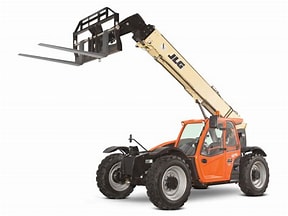
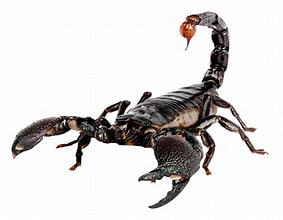
Building 126 was built to serve as a warehouse, providing better space for preserving the artifacts and archival collections. Now, we can store large pieces of equipment, showing the evolution of health care. It also provides better flexibility for making those collections accessible to you when we open to the public.
We recently installed a new art rack to store art in the collection properly. Emma Miller’s portrait was the first piece installed. She was the Matron at the home and served in various important roles. Miller’s Cottage bears her name due to her contributions to the home. She also received the honor of being the first woman buried in the Dayton National Cemetery.
We have also started reorganizing the collection, and the Collections Committee is actively considering objects for inclusion in the permanent collection. It is a long process, and we anticipate completing it by the end of the fiscal year (September 2024). We are also entering objects into the collections management system, making everything easier to track and inventory. We plan to start a project in 2024 to add compact shelving, providing additional space to expand the archival collection.
In October, we installed a temporary exhibit in Building 126 to highlight medical equipment the Denver Acquisition Center shipped directly to veterans. The exhibit includes a variety of objects used to assist veterans with their health. We will rotate this case every six months to share objects in the collection. There will also be an online exhibit of the same objects.
Robyn set up her lab on the third floor for processing, preserving, and digitizing archival material. Just like Batman, she has some wonderful toys. These include a humidification chamber for rehydrating and removing creases and wrinkles from paper. She also has equipment to digitize a variety of materials. The crown jewel is the DC Titan. It can digitize large flat documents and books and even create 3D renderings of objects. It also uses unique cameras and software to look at the layers of a document, painting, or object to see if previous writing, painting, or inscription exists.
By Kurt Senn
Curator, National VA History Center
Share this story
Related Stories

Curator Corner
The Story Behind the National Homes’ Seal
The National Home for Disabled Volunteer Soldiers turns 160 years old in 2025. The campuses are the oldest in the VA system, providing healthcare to Veterans to this day.
At the time of their establishment, they were the first of their type on this scale in the world. Within the NHDVS seal is the story that goes back 160 years ago.
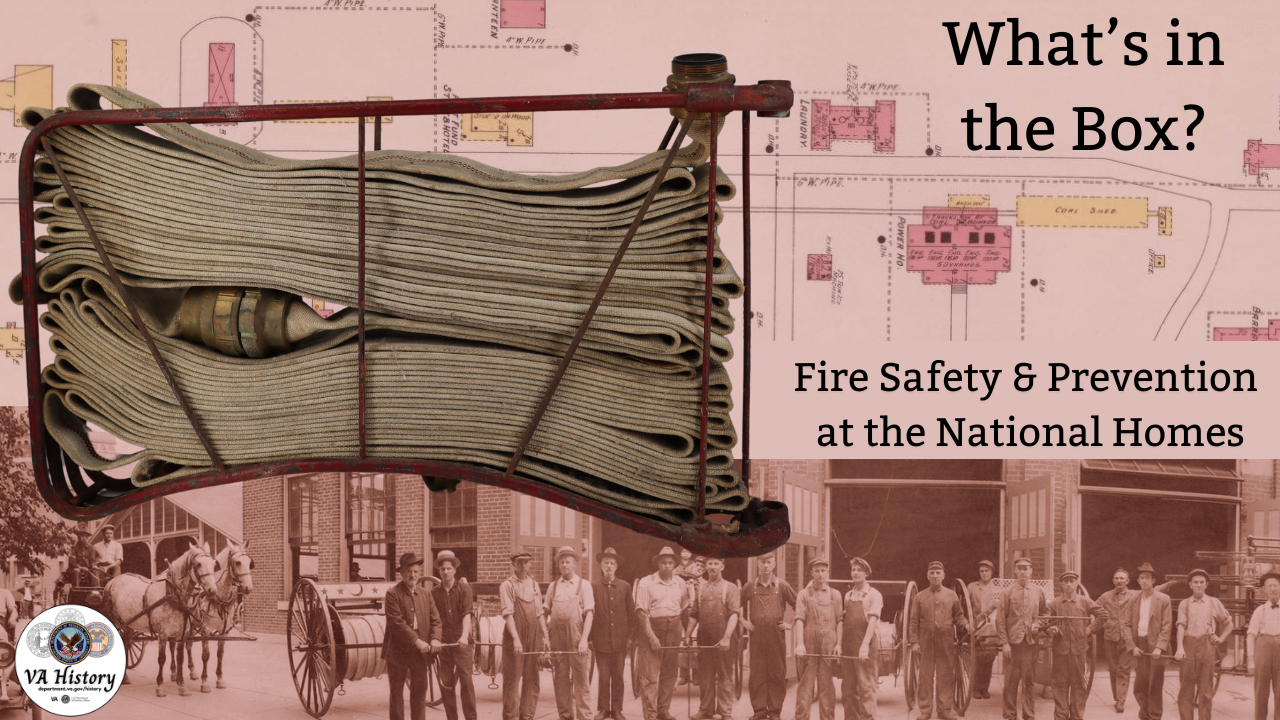
Curator Corner
What’s in the Box? Fire Safety and Prevention at the National Homes
Fire safety may not be the first thing that comes to mind when thinking about Veteran care, but during the National Home for Disabled Volunteer Soldiers period (1865-1930), it was a critical concern. With campuses largely constructed of wooden-frame buildings, housing thousands of often elderly and disabled Veterans, the risk of fire was ever-present. Leaders of the National Homes were keenly aware of this danger, as reflected in their efforts to establish early fire safety protocols.
Throughout the late 19th century, the National Homes developed fire departments that were often staffed by Veteran residents, and the Central Branch in Dayton even had a steam fire engine. Maps from this era, produced by the Sanborn Map Company for fire insurance purposes, reveal detailed records of fire prevention equipment and strategies used at the Homes. These records provide us with a rare glimpse into evolving fire safety measures in the late 19th and early 20th Century, all part of a collective effort to ensure the well-being of the many Veterans living there.


